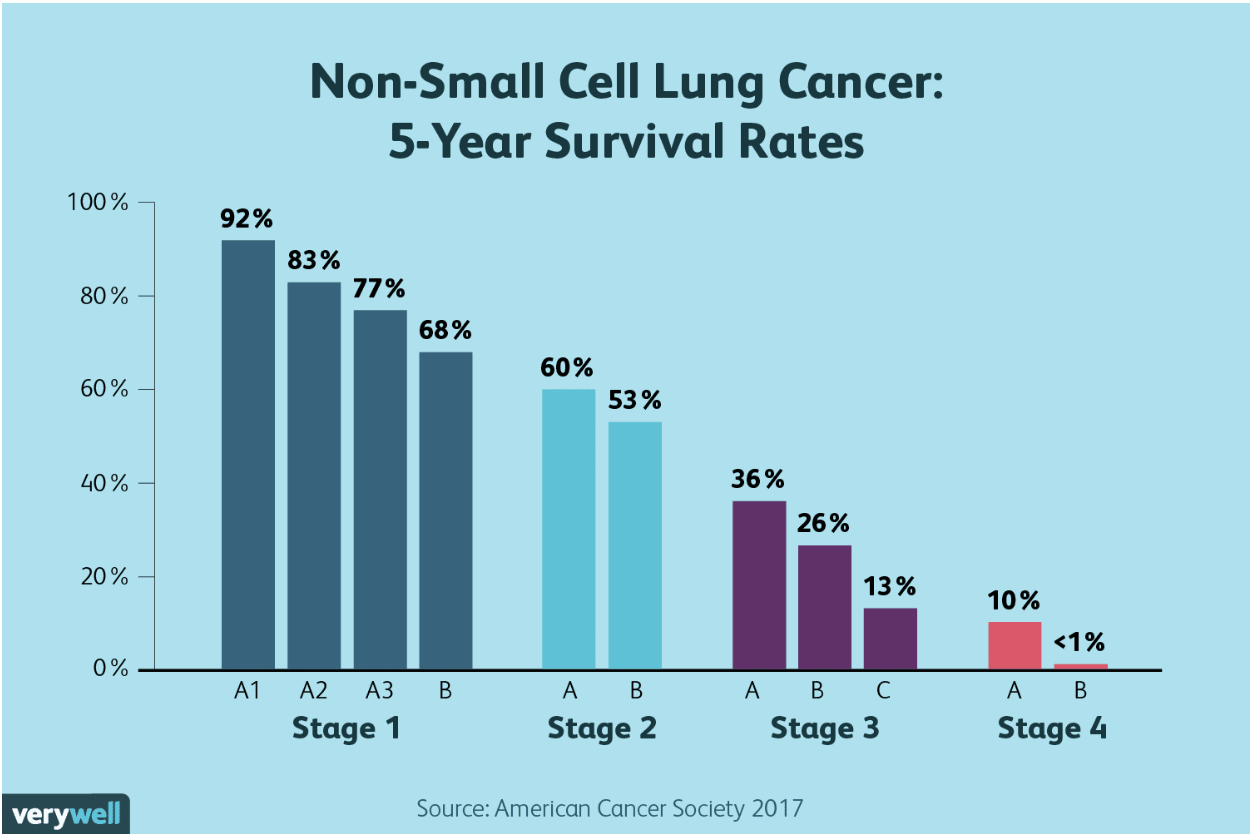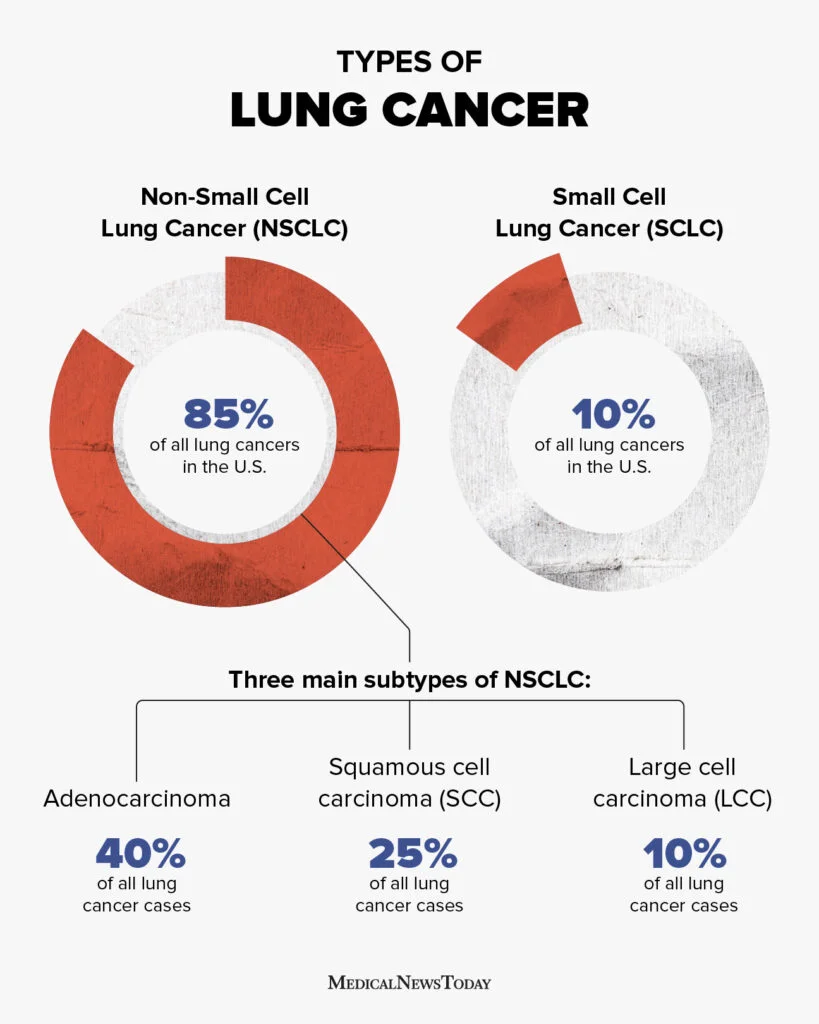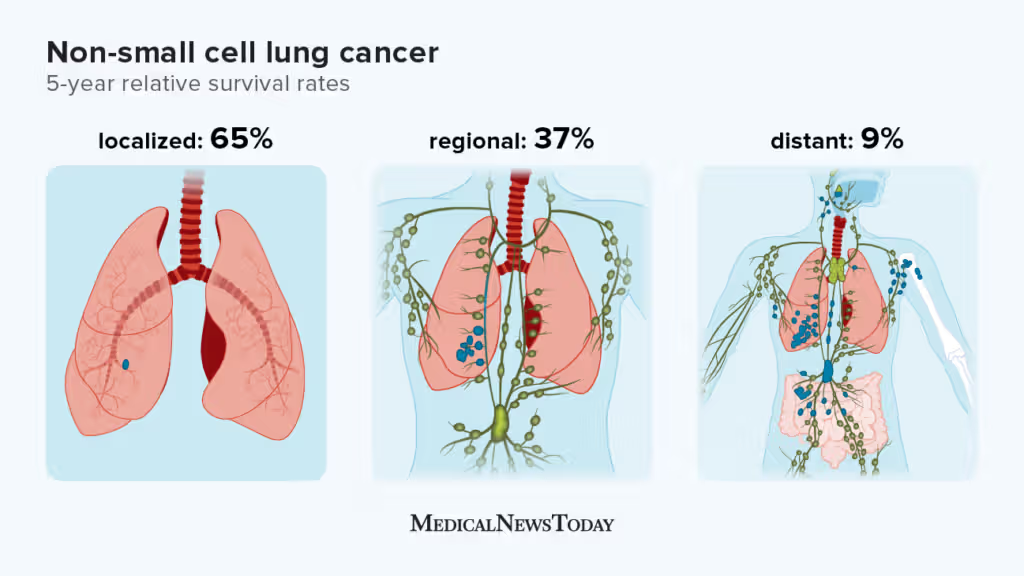Understanding Non-Small Cell Lung Cancer: A Resource Guide
This resource aims to provide comprehensive information about non-small cell lung cancer (NSCLC) survival rates, helping patients, families, and individuals concerned about lung cancer risk make informed decisions and understand prognosis factors.
Types and Distribution
Non-small cell lung cancer represents 85% of all lung cancer cases in the United States. The three main subtypes are Adenocarcinoma, Squamous cell carcinoma, and Large cell carcinoma. (Figure 1.1) Within that, there are three different spreads of the cancer: localized, regional, and distant. (Figure 1.2)
Survival Rates and Staging
We can infer from the data that early detection is crucial. As localized cancer shows a 65% 5-year survival rate compared to just 9% for distant metastasis, (Figure 1.2) patients are more likely to survive if treatment is implemented in the earlier stages of the cancer. Specifically, Stage 1 cancer has significantly better outcomes, with Stage 1A1 showing a 92% survival rate. (Figure 2.1) There's a clear stepwise decline in survival rates as the stage progresses, with Stage 4B having less than 1% survival rate. This is a near-linear progression downwards.
Figure 2.1 - American Cancer Society
Impact of Smoking Cessation
Quitting smoking significantly improves survival outcomes: Quitting 5+ years before diagnosis: 20% reduced mortality risk Quitting 2-5 years before diagnosis: 17% reduced mortality risk Quitting -2 years before diagnosis: 12% reduced mortality risk
How to Use These Resources
For Recent Diagnoses:
- Start with the Cancer.org survival rates page to understand your specific stage and kind of Lung Cancer
- Review MedicalNewsToday's prevalence data to understand your cancer type.
- Consult ASCO presentations for the latest treatment developments.
For Prevention in People who Smoke:
- Focus on finding online resources to help quit or ween off smoking
- Understand your risk factors through Cancer.org statistics
- Learn about early detection and screening options

